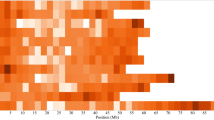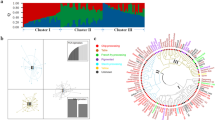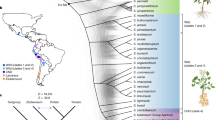Abstract
'BOLTERS' occur1,2 in many potato varieties and are distinguished from the normal plants of the variety by the following characteristics: the haulms are more vigorous, taller and with longer internodes, the tubers are coarser and the crop heavier at maturity, maturity is much later, and flowering is much freer. The 'bolter' condition is perpetuated by the tubers, and Davidson1 states that bolters obtained in 1917 from the variety Snowdrop have always produced bolters.
This is a preview of subscription content, access via your institution
Access options
Subscribe to this journal
Receive 51 print issues and online access
$199.00 per year
only $3.90 per issue
Buy this article
- Purchase on SpringerLink
- Instant access to full article PDF
Prices may be subject to local taxes which are calculated during checkout
Similar content being viewed by others
References
"Potato Growing for Seed Purposes" (Dublin, 1937).
"The Maintenance of Pure and Vigorous Stocks of Varieties of the Potato",Revised ed. (Edinburgh, 1944).
Author information
Authors and Affiliations
Rights and permissions
About this article
Cite this article
CARSON, G., HOWARD, H. Inheritance of the 'Bolter' Condition in the Potato. Nature 154, 829 (1944). https://doi.org/10.1038/154829c0
Issue date:
DOI: https://doi.org/10.1038/154829c0
This article is cited by
-
Norgold Russet and Norgold Russet strain M — additional evidence for genetic dissimilarity
American Potato Journal (1995)
-
Norgold russet, superior and red la soda strains selected for potato cultivar improvement in Nebraska
American Potato Journal (1994)
-
Bolting, a vegetative variation in the potato
Heredity (1952)
-
Cytogenetic studies on Solanum tuberosum L. and some of its relatives
Genetica (1951)
-
Potato grafting experiments
Journal of Genetics (1949)



